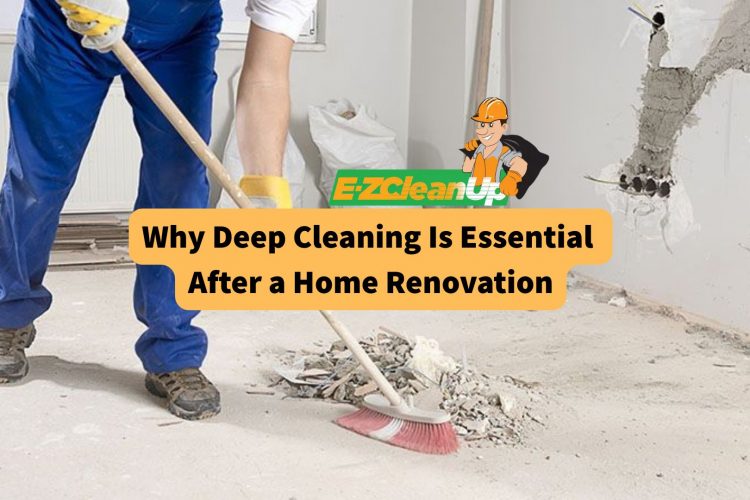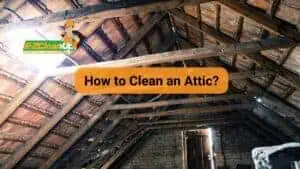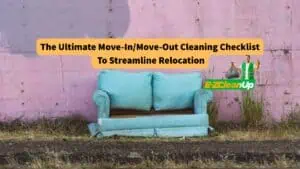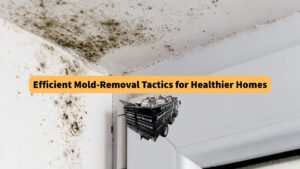After a home renovation, your space may look new. But it could be hiding dust, debris, and fine particles everywhere. So, a deep clean can bring your home back to life, protect your upgrades, and give you that fresh, move-in-ready feel that you’ve been waiting for.
And if you’re still wondering why deep cleaning is essential after a home renovation, you better check this guide to keep your space dust-free.
#1 Why Post-Renovation Cleaning Matters?
Renovating your home can be challenging but exciting. But once the dust settles, going for a deep clean is always a must.
Post-renovation cleaning can also help clear out hidden dust, debris, and chemicals that regular cleaning can’t touch.
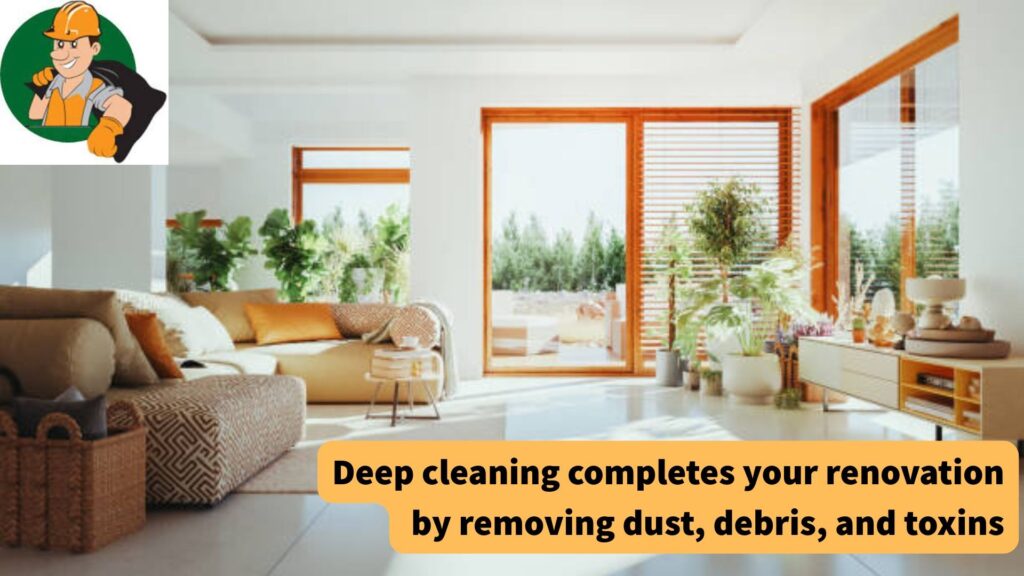
At the same time, it protects your health, preserves your new finishes, and makes your space feel fresher.
These are some of the reasons why deep cleaning for newly renovated homes is something you should take advantage of after every renovation.
Because other than it clears the mess, it also protects your health. And it’s the final step to keep your space safe and ready to enjoy.
#2 The Gross Stuff Left Behind (Dust, Debris, and the Nasty Renovation Gunk)
Renovations can make your space look amazing, but the aftermath? Not so much. Here’s what’s hiding behind that fresh new look:
- Invisible Dust Everywhere – Fine particles that sneak into vents, corners, and even inside your drawers.
- Construction Debris – Bits of drywall, sawdust, and leftover materials can settle in unexpected places.
- Sticky Gunk and Residue – Paint splatters, glue, and adhesives that can cling to your new finishes.
This mess isn’t just ugly, but it can also cause allergies, bad air, and surface damage. So a proper post-renovation deep clean can help wipe it all out.
#3 Why Ignoring the Dirt Could Be a Health Risk
And here’s why that leftover mess is more dangerous than it looks:
1. Airborne Dust & Chemicals
The fine particles from drywall, paint, and adhesives can stay suspended in the air. And breathing them in can irritate your lungs, trigger allergies, and even worsen asthma.
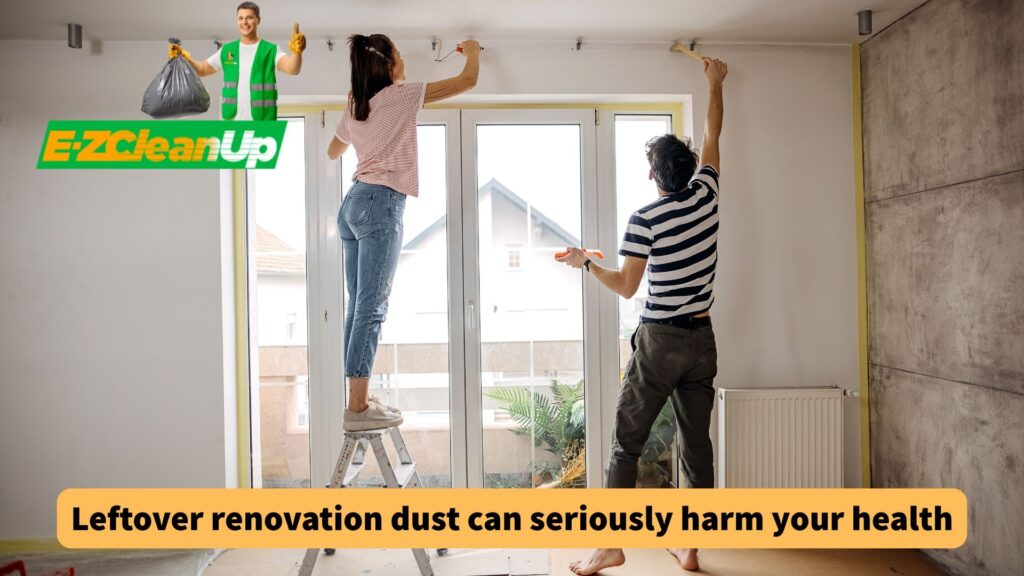
2. Serious Long-Term Risks
When always exposed to silica and other construction dust, it can lead to chronic issues like COPD or silicosis.
3. Hidden Mold & Bacteria
Leftover debris and moisture can create breeding grounds for mold and bacteria, which can eventually affect your indoor air quality and overall health.
4. It Makes Vulnerable Groups are at Risk
Children, seniors, and anyone with breathing problems or weak immune systems are especially sensitive to post-renovation pollutants.
#4 How Skipping Deep Cleaning Can Cost You in the Long Run
Skipping deep cleaning after a renovation might help so you can save a few bucks now. But do you know that it’ll cost you more later. Here’s how:
Damage to New Surfaces
Dust and debris can scratch floors, dull countertops, and even stain your fresh paint. So, over time, you’ll need costly repairs or replacements.
Shortened Lifespan of Materials
Sometimes, construction residue can also settle into cracks and corners. In the long run, it can wear down finishes and fixtures faster than expected.
Mold, Mildew, and Moisture Issues
The hidden dirt mixed with leftover moisture can also lead to mold growth. As a result, it brings allergy flare-ups for some folks, or even bad odors, and expensive remediation.
Poor Indoor Air Quality
Lingering dust and chemicals can also affect breathing and trigger long-term health problems, which adds to medical costs.
So, deep cleaning isn’t just about looks. It’s an investment that protects your home, health, and wallet from costly problems down the road.
#5 The Spots That Need Extra Attention After Renovation
After all the hammering and painting, some parts of your home take the biggest hit from dust and debris. Below are places where to aim your deep-cleaning energy:
- Air Vents & HVAC Systems – These trap tons of fine dust that can spread through your home. Try to clean vents and replace filters to keep your air fresh.
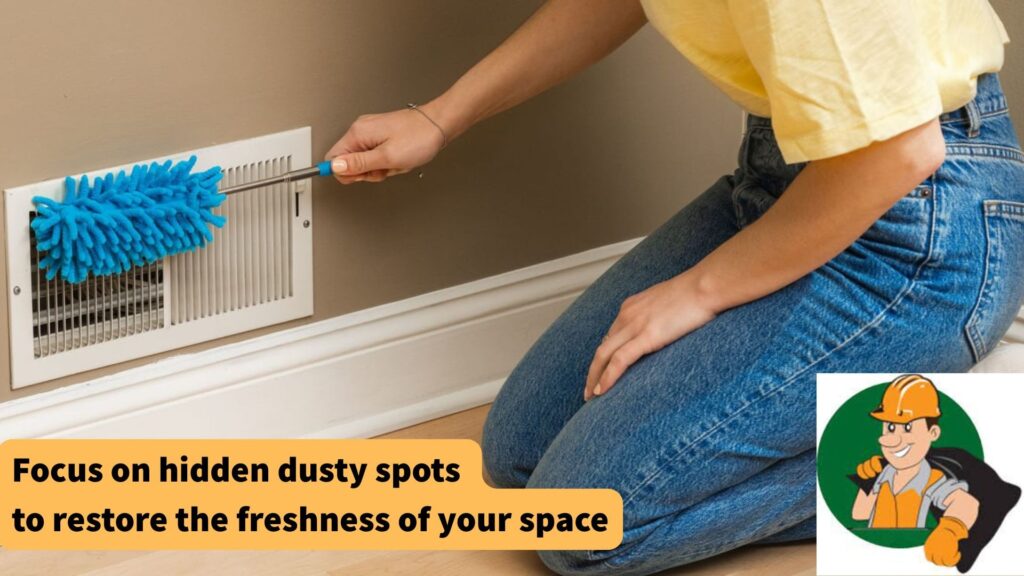
- Floors & Baseboards – Dust loves corners, cracks, and under-cabinet spaces. So vacuum, mop, and wipe every edge for spotless results.
- Windows & Sills – Paint splatters, fingerprints, and dust can collect in here.
- Walls & Ceilings – Those fine particles might cling to paint and light fixtures.
- Cabinets & Shelves – Inside, outside, and even on top, well, dust settles everywhere. But first, try to empty them out so you can clean every surface.
- Kitchens & Bathrooms – Adhesives, grout dust, and residue can ruin finishes. You can use gentle cleaners to restore shine to sinks, counters, and tiles.
- Light Fixtures & Ceiling Fans – Dust builds up fast here and spreads when the fan turns on.
- Furniture & Fabrics – Sofas, curtains, and cushions soak up dust. Vacuuming them thoroughly can help or consider a pro cleaner if needed.
#6 DIY Deep Clean or Call the Pros? Here’s What You Need to Know
After a renovation, your next clean up can feel like another big project. So, should you handle it yourself or hire experts?
Then check this simple breakdown to help you decide:
DIY Deep Cleaning, The Good
Giving you home some DIY deep cleaning will surely save money. Especially if you’re willing to put in the effort.
You have full control over the products that you use, which is also perfect for people who are eco-friendly conscious.
Opting for DIY also has a flexible timing, since you can clean at your own pace.
DIY Deep Cleaning, The Not-So-Good
Before you hop into DIY deep cleaning, remember, it can be labor-intensive, a hassle, and time-consuming.
For example, fine dust and sticky residue can be hard to remove without the right tools. Or using the wrong cleaners or methods can damage new finishes.
Hiring Professional Cleaners, The Benefits
Hiring pros can help you save time and sweat, because they use industrial-grade tools like HEPA vacuums for a deeper, safer clean.
They also have detailed checklists to make sure that no spot gets missed.
So your space can have better air quality and less stress for you! You don’t have to risk exposure to dust or chemicals.
It can be a huge time-saver, especially if you’d rather skip the heavy lifting.
If the mess is major, it would be best to go with the pros.
But if your project is small, your budget’s tight, and you don’t mind the work, a thorough DIY clean can do the job.
FAQs
How soon should I schedule a deep clean after renovation?
You can wait until all construction tasks are done and the dust has settled, usually around 24 to 48 hours after completion, before you can start a deep clean.
Can regular household cleaning tools handle post-renovation dust?
Not usually, because fine construction dust may require HEPA-filter vacuums, microfiber cloths, and specialized cleaners to trap and remove tiny particles.
How long does a full post-renovation deep clean take?
Well, it could depend on your home’s size and the amount of work done. So it can take anywhere from a few hours to a full day or more.
The Bottom Line – Turn Your Renovation Mess into a Fresh, Safe Home ASAP!
Your renovation isn’t truly complete until every trace of dust, debris, and residue is gone.
And a deep cleaning can transform that post-construction chaos into a spotless, healthy, and comfortable home.
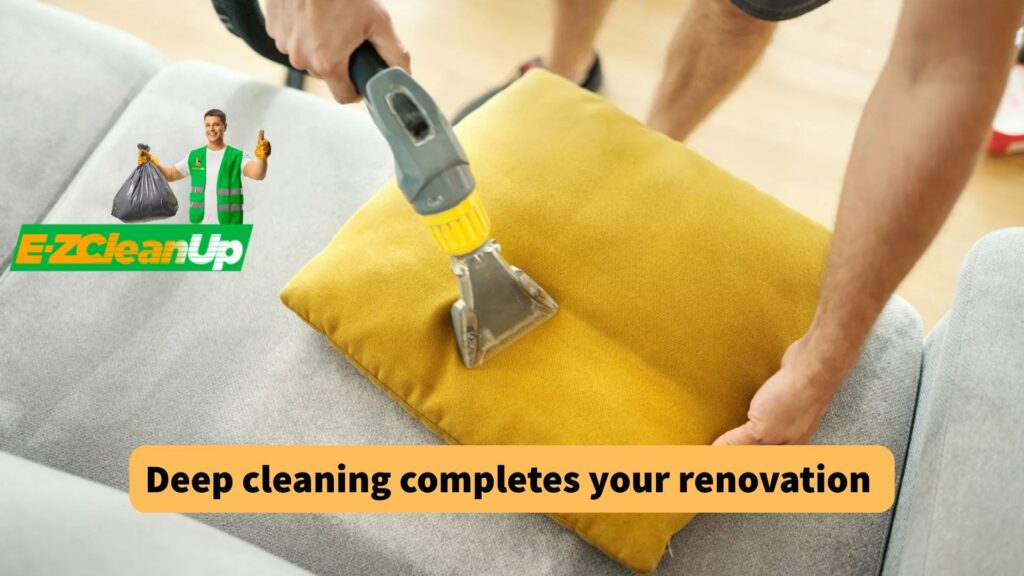
So, whether you tackle it yourself or call in the pros, don’t delay! Because cleaning up right away protects your new finishes, improves the air quality, and lets you fully relax on your space.
After all, your space deserves a vibe that feels just as new as it should.

